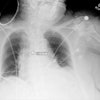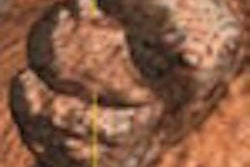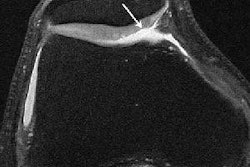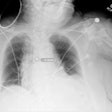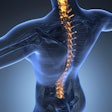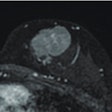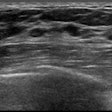WASHINGTON, DC - In ancient times, before the advent of helical computed tomography, one couldn't simply choose CT instead of radiographs to check for cervical spine injuries because fractures could be missed in axial planes due to reconstruction gaps between cuts.
The design of helical imaging presumably eliminated that problem, allowing trauma patients with potential c-spine injuries to skip the delay and difficulties of c-spine x-rays and go straight to CT.
But when orthopedic surgeons at West Virginia University in Morgantown, WV, looked at whether the standard of care could be altered in light of technological improvements, they found the evidence was lacking.
With a study presented this week at the 2005 American Academy of Orthopaedic Surgeons (AAOS) meeting, the WVU orthopedists chip away at another manifestation of the gap between the speed of imaging advances and the comparatively glacial pace of high-quality research supporting new practices.
The WVU study was inspired in large part because practices had already changed at their Jon Michael Moore Trauma Center, said lead author Dr. Patrick McCulloch.
"People were beginning to get a little lax about getting the plain films, and they were just using the CT," McCulloch noted. "And when we looked in the literature, there was no good study to say that you were able to do that."
"There were a lot of studies done, but none of them were a prospective trial that kept the same patients and had people read helical CT separate from the plain films," McCulloch noted.
"A lot of times when they were reading CTs, the radiologist would look back at the plain films and review that too, and vice versa," McCulloch continued. "But in order to see whether or not you could just use (CT) alone, you had to take out that variable."
The group looked at 407 trauma patients over age 18 who presented between July 2002 and February 2004. C-spine CT and standard three-view plain films were interpreted acutely and used in the care of the patients.
A month or more after each trauma, the CT scans and plain films were re-examined by two radiologists. Each radiologist read only the CT or only the plain film, and they were unaware of the original readings. Their interpretations were then compared to the initial readings and, when needed, discharge summaries.
One major finding was that 52% of the plain films were inadequate, despite attempts to capture the entire cervical spine with a swimmer's view in 85% of cases. The positioning required was undoubtedly difficult or impossible for many of the patients, 71% of whom had been injured in motor vehicle crashes.
In the 194 patients with adequate plain films, the radiographs showed only 12 out of the 25 injuries that were ultimately identified in those patients. Missed injuries included type II odontoid fracture, C1 posterior arch fracture, C2 body fracture, facet fractures, transverse process fractures, and spinous process fractures.
The adequate plain films achieved just a 52% sensitivity, 98% specificity, 81% positive predictive value, and 93% negative predictive value. Meanwhile, helical CT alone achieved 98% sensitivity, 98% specificity, 89% positive predictive value, and 99.7% negative predictive value.
CT's high negative predictive value is particularly important as a representation of accurately "clearing" patients who truly don't have an injury, the authors noted. The one fracture that was missed on CT but seen on x-rays by the radiologists had actually been noted on the original CT reading, and was thus credited to human error rather than a shortcoming of CT.
The upshot for WVU is an endorsement of a new standard of care, McCulloch suggested.
"If the patients are going to the CT scanner anyway, or those patients that have a higher energy injury or a better chance of having a c-spine injury, you don't have to get any plain films -- including the spot lateral in the trauma bay -- which will save time," he concluded.
By Tracie L. Thompson
AuntMinnie.com staff writer
February 25, 2005
Related Reading
Overexposed? CT in the emergency room, October 21, 2004
Early MRI after acute traumatic spinal cord injury can help guide management, October 5, 2004
CT: An all-star modality for C-spine trauma? August 18, 2004
Plain film x-rays not needed with CT to evaluate polytrauma spinal injuries, December 6, 2002
Copyright © 2005 AuntMinnie.com
